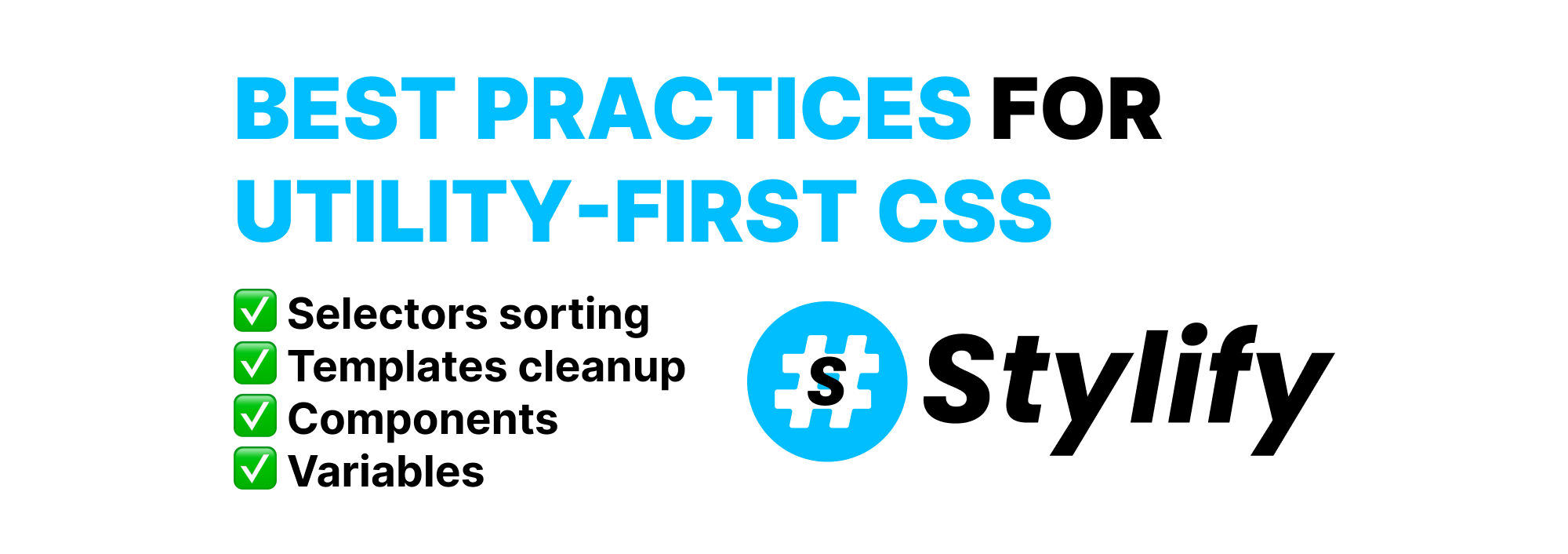
Simple React like button with Stylify CSS. From Utilities, to Components, mangled selectors and 50% smaller production build.
Style buttons in React quickly with Stylify CSS. Its like writing CSS directly into the template.
Check out how to style a button quickly using only utilities and then clean the template using components. Learn why the output in production can be 50% and smaller🔥.
Introduction
Stylify is a library that uses CSS-like selectors to generate optimized utility-first CSS based on what you write.
- ✅ CSS-like selectors
- ✅ No framework to study
- ✅ Less time spent in docs
- ✅ Mangled & Extremely small CSS
- ✅ No CSS purge needed
- ✅ Components, Variables, Custom selectors
- ✅ It can generate multiple CSS bundles
Also we have a page about what problems Stylify CSS solves and why you should give it a try!
The Code
Here is the code behind the button:
import { useState } from 'react';
import './stylify.css';
function LikeButton() {
const [count, setCount] = useState(0);
return (
<button
className="
color:#222
font-weight:bold
border:0
background:#fff
font-size:16px
padding:8px_16px
border-radius:4px
cursor:pointer
box-shadow:0_.3em_.6em_rgba(0,0,0,0.3)
transition:background_0.3s,scale_0.3
align-items:center
display:inline-flex
[&:hover_span:first-of-type]{transform:scale(1.5)}
[span]{display:inline-flex}
"
onClick={() => setCount(count + 1)}
>
<span className="
margin-right:8px
font-size:24px
transition:transform_0.3s
">❤️</span>
<span className="margin-right:6px">Like</span>
<span
className="
background:#eee
padding:4px
align-items:center
justify-content:center
border-radius:50%
min-width:24px
min-height:24px
">{count}</span>
</button>
);
}
export default LikeButton;The generated CSS for example above:
.color\:\#222{color: #222}
.font-weight\:bold{font-weight: bold}
.border\:0{border: 0}
.background\:\#fff{background: #fff}
.font-size\:16px{font-size: 16px}
.padding\:8px_16px{padding: 8px 16px}
.border-radius\:4px{border-radius: 4px}
.cursor\:pointer{cursor: pointer}
.box-shadow\:0_\.3em_\.6em_rgba\(0\,0\,0\,0\.3\){box-shadow: 0 .3em .6em rgba(0,0,0,0.3)}
.transition\:background_0\.3s\,scale_0\.3{transition: background 0.3s,scale 0.3}
.align-items\:center{align-items: center}
.\[span\]\{display\:inline\-flex\} span,
.display\:inline-flex{display: inline-flex}
.margin-right\:8px{margin-right: 8px}
.font-size\:24px{font-size: 24px}
.transition\:transform_0\.3s{transition: transform 0.3s}
.margin-right\:6px{margin-right: 6px}
.background\:\#eee{background: #eee}
.padding\:4px{padding: 4px}
.justify-content\:center{justify-content: center}
.border-radius\:50\%{border-radius: 50%}
.min-width\:24px{min-width: 24px}
.min-height\:24px{min-height: 24px}
.\[\&\:hover\_span\:first\-of\-type\]\{transform\:scale\(1\.5\)\}:hover span:first-of-type,
.transform\:scale\(1\.5\){transform: scale(1.5)}Production build - 50% smaller
When you allow Stylify to mangle selectors, then the output looks like this:
.c{color:#222}
.d{font-weight:bold}
.e{border:0}
.f{background:#fff}
.g{font-size:16px}
.h{padding:8px 16px}
.i{border-radius:4px}
.j{cursor:pointer}
.k{box-shadow:0 .3em .6em rgba(0,0,0,0.3)}
.l{transition:background 0.3s,scale 0.3}
.m{align-items:center}
.b span,.n{display:inline-flex}
.o{margin-right:8px}
.p{font-size:24px}
.q{transition:transform 0.3s}
.r{margin-right:6px}
.s{background:#eee}
.t{padding:4px}
.u{justify-content:center}
.v{border-radius:50%}
.w{min-width:24px}
.x{min-height:24px}
.a:hover span:first-of-type,.y{transform:scale(1.5)}Also, the selectors in JSX are minified
<button
className="c d e f g h i j k l m n a b"
onClick={() => setCount(count + 1)}
>
<span className="o p q">❤️</span>
<span className="r">Like</span>
<span className="s t m u v w x">{count}</span>
</button>CSS size:
- Dev: 1101 bytes
- Production: 556 bytes
The size savings are around 50% (The size is similar in gzipped mode). If we take the mangled HTML, the difference will be even bigger.
Template cleanup
What if we have a lot of utilities and want to move them out of the template? With Stylify you can do that using reusable components. They can be defined within a comment (expects js object without surrounding brackets) in the file where they are used or in a global config.
// ...
/*
stylify-components
'like-button': `
color:#222
font-weight:bold
border:0
background:#fff
font-size:16px
padding:8px_16px
border-radius:4px
cursor:pointer
box-shadow:0_.3em_.6em_rgba(0,0,0,0.3)
transition:background_0.3s,scale_0.3
align-items:center
display:inline-flex
span { display:inline-flex }
&:hover span:first-of-type { transform:scale(1.5) }
`,
'like-button__hearth': 'margin-right:8px font-size:24px transition:transform_0.3s',
'like-button__counter': `
background:#eee
padding:4px
align-items:center
justify-content:center
border-radius:50%
min-width:24px
min-height:24px
`
/stylify-components
*/
function LikeButton() {
// ...
return (
<button className="like-button" onClick={() => setCount(count + 1)}>
<span className="like-button__hearth">❤️</span>
<span className="margin-right:6px">Like</span>
<span className="like-button__counter">{count}</span>
</button>
);
}
// ...In production, the components are also mangled.
Syntax explanation
In the example above, you can see Stylify using CSS-like selectors. With a few differences.
_within a selector is used instead of a space[span]{display:inline-flex}is an inline custom selector. This allows you to style custom selectors.&inside[&:hover_span:first-of-type]always refers to an upper level like in SCSS- The indented syntax in components is also like in SCSS. Except, to keep things simple, it supports only nesting and chaining
span {
display:inline-flex
}
&:hover span:first-of-type {
transform:scale(1.5)
}Check out Stackblitz Playground
You can try the playground on Stackblitz.



